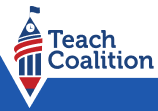“Richard Riley, former U.S. Secretary of Education, famously stated: ‘We are currently preparing students for jobs that DON’T EXIST YET, using technologies that haven’t been invented, in order to solve problems we don’t even know are problems yet.’ Excellence in STEM education that is affordable to all enables us to take on these challenges with confidence and enthusiasm and benefits our future society as a whole.” – Rabbi Saul Zucker, Ben Porat Yosef, Paramus, NJ
Currently, and for the foreseeable future, career success is increasingly dependent upon achieving a sophisticated proficiency in science, technology, engineering and math (STEM). The significance of eligibility for STEM related employment is starkly illustrated in the data below from the Commonwealth Corporation.
STEM Degree Holder vs. Non-STEM Degree Holder
Average annual wage $98,500/$62,000
Entry level wage $54,000/$27,190
Hourly wage $26.13/$13.07
Consequently, the efforts of the Teach Coalition to increase government funding to non-public schools have focused significantly on increasing government funding of STEM education. This state-level advocacy has already produced significant results for STEM teacher funding in New York and New Jersey.
For example, in New Jersey, the Teach Coalition succeeded in achieving an initial allocation of $5 million to subsidize the cost of introducing, to nonpublic schools, highly qualified STEM public school teachers.
In New York State, a new program was introduced to reimburse nonpublic schools for salaries of STEM teachers equal to the salary scale of public schools. In the first year of the program, the $5 million aggregate allocation provided qualifying schools with multiple teachers. Distributions ranged from $10,000 to $120,000. The aggregate government budgetary allocation for year two is $15 million, and $30 million is allocated for year three. School allocations will rise accordingly with the increase in Albany budgetary spending.
The funding of STEM education is all the more consequential in light of the paucity, and thereby competition for, properly qualified STEM teachers. STEM teachers are hard to find and retain. More than half of the school districts across the U.S. are struggling to recruit and retain qualified STEM teachers. In fact, not only is there competition among nonpublic schools for effective, qualified STEM educators, but the competition with public schools is fierce as well.
“It is a constant struggle to find qualified STEM teachers. With this new program, we can offer our children the best possible instruction to prepare them for the FUTURE.” – Michelle Pincus, Yeshivas Netivot Montessori, East Brunswick, NJ
JOIN US


